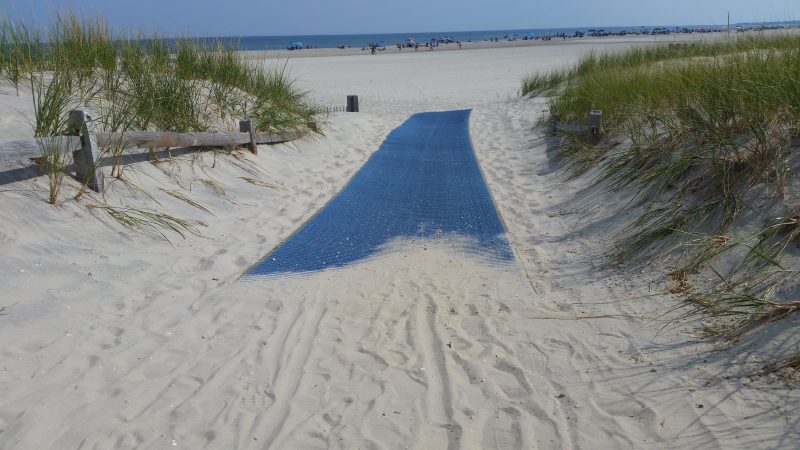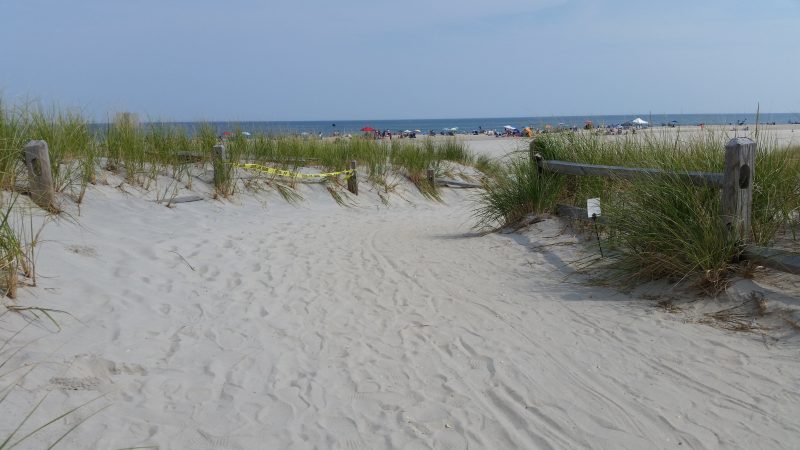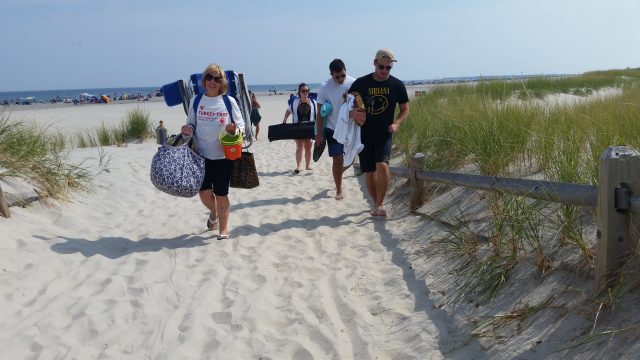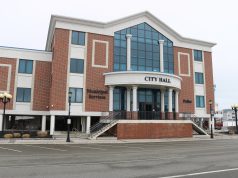By Donald Wittkowski
Lynne Shirk’s trip to the beach at 54th Street in Sea Isle City begins with a slightly uphill climb along a gravel pathway that crosses over the dunes.
By the time she gets to the top of the path, the hard-packed gravel suddenly gives way to thick, powdery beach sand.
The gravel pathways are supposed to provide an easy transition over the dunes to the beach. But Shirk finds herself sinking in deep sand that is hard to navigate while walking on and off the beach.
“It’s a pain trudging through the sand. It’s rough,” she said. “Why aren’t the gravel beach entrances being better maintained?”
City officials are now trying to think of ways to keep the pathways – like the one near Shirk’s home on 54th Street – clear of sand to improve access to the beaches, especially for senior citizens and people with disabilities.
Sea Isle’s beaches were replenished in 2015 and 2016 with nearly 3 million cubic yards of new sand, creating a much wider shoreline spanning the entire 4.5-mile length of the barrier island.
However, the wind tends to blow a lot of that sand onto the gravel pathways leading to the beaches. Shirk appeared at a City Council meeting on Tuesday to complain about the condition of the pathways, prompting a discussion about the challenges Sea Isle is facing in trying to keep them clear.
“The beach is a dynamic environment. It doesn’t just sit there,” City Business Administrator George Savastano said.
Savastano explained that the city can’t simply scrape all of the sand from the pathways down to the bare gravel because that would create a “funnel” for even more sand.
Altogether, there are 90 pathways to the beach. Sea Isle has been adding more of the so-called “Mobi-Mats” to the beaches to prevent people from getting bogged down in the heavy sand.
The distinctive blue mats, made of plastic, lie on top of the sand and help people walk across the beach. But similar to the gravel pathways, the beach sand also has a tendency of covering the mats, despite the best efforts of city work crews to keep them clean.
“We’re doing the best we can to maintain the mats we have and the paths we have with the available resources,” Savastano said.

Mobi-Mats have been placed at approximately every third street along the shoreline. Sea Isle’s Council has approved an additional $102,000 in funding to buy more of the mats for the summer of 2019.
Ultimately, the city’s goal is to have a mat for every block from First Street to 94th Street along the entire beachfront. The estimated cost is $600,000, city officials said.
“We need more mats,” Councilman Frank Edwardi said.
Savastano told the Council members there is still time to approve extra funding to buy even more mats for 2019.
However, the city must also devise ways to keep the mats and gravel pathways free of the “tons and tons” of sand that blows off the beaches and dunes, Savastano noted.
“We have recognized that it’s a large task to maintain the beach paths – 90 of them – for the entire summer,” he said.
Dunes that were created during Sea Isle’s beach replenishment project in 2015 and 2016 are still “baby dunes” that lack thick vegetation to hold the sand in place, Savastano explained.
Shirk believes the existing dune grass is too weak to contain the sand. She wants to see bigger bushes planted in the dunes, such as bayberry, beach plums and rugosa.
In coming years, the dune vegetation is expected to become more established, acting as a trap to prevent sand from blowing onto the gravel pathways and beach mats, Savastano said.
Meanwhile, the city is looking for shorter-term solutions to keep the pathways and mats clear. Among them, Savastano mentioned the possibility of Sea Isle hiring more cleaning crews next summer.









